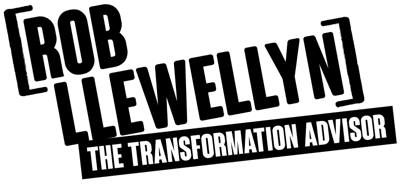
What is Digital Transformation Governance?
Digital transformation governance is the process of establishing and maintaining control over an organisation's digital initiatives and assets. It involves setting clear goals and objectives for the organisation's digital transformation efforts, as well as defining roles and responsibilities, policies and procedures, and standards and guidelines for how those efforts should be carried out.
Effective digital transformation governance requires a clear vision and strategy for how the organisation's digital assets and capabilities will be used to drive business value. It also requires a governance structure that is agile and responsive to the needs of the business, and that can adapt to changes in the market and technological landscape.
Digital transformation governance typically involves the participation of multiple stakeholders, including executives, IT leaders, business leaders, and other key personnel. It may also involve the use of specialised tools and technologies to help manage and track the progress of digital transformation initiatives.
Why is Digital Transformation Governance Important
Digital transformation governance is important for a number of reasons:
It helps ensure that the organisation's digital transformation efforts are aligned with its overall business strategy and goals.
- It helps to establish clear roles and responsibilities for those involved in digital transformation initiatives, which can help to ensure that projects are completed efficiently and effectively.
- It helps to establish policies and procedures for how digital transformation initiatives should be carried out, which can help to ensure that they are completed in a consistent and controlled manner.
- It helps to establish standards and guidelines for how digital assets and capabilities should be used, which can help to ensure that they are used in a way that maximises their value to the organisation.
- It helps to ensure that the organisation's digital transformation efforts are aligned with any relevant laws, regulations, and industry standards.
Overall, effective digital transformation governance helps to ensure that the organisation's digital transformation efforts are well-managed, aligned with the business, and deliver value to the organisation.
The topic of digital transformation governance is far from the technical topics of mobile, analytics, IoT, etc, but without the right governance, even the finest teams of technical talent and healthy budgets are likely to suffer similar pains to those experienced by the BBC digital transformation where it was revealed that:
1. The governance structure was not effective in dealing with the transformation's complexity;
2. Corporate Governance bodies were not provided with a clear view of the transformation status;
3. The lack of an integrated assurance plan reduced the governance effectiveness in managing risk.
Without well constructed digital governance, chaos, confusion and political collusion, can hinder the effort from start to finish. We expect effective governance to be in place for functions such as HR and finance, and similarly transformation leaders have a responsibility to do the same across their initiatives. Expecting things to go well using anything less than adequate governance puts the entire initiative at risk.
How Can You Establish Good Digital Transformation Governance?
If your organisation is already practicing professional programme and/or portfolio management, the chances are that you already have the right people with the right capabilities to help ensure your digital transformation governance is well designed.
We attended the “Governance for Digital Transformation” event where George Westerman of MIT Sloan and Sanjay Saraf, Senior VP and CTO of Western Union Digital, were the main speakers. Ten of the critical success factors for digital governance which came out of that event included:
- Clear digital decision-making roles
- Mutual Business and IT activity; often CIO enables, and a CXO leads
- Operates at the right pace
- Funding model recognises different types of investment, not one-size-fits-all
- Monitors and “pulls plug” on failing initiatives early
- Process ensures all elements, not just technology, are considered before funding happens
- Clear measures of expected value and how it will be counted
- Business leads are accountable for the results
- Process examines actual vs. expected outcomes
- Clear exception process
In their Leading Digital book, George Westerman and his co-authors Andrew McAfee and Didier Bonnet dedicate a good proportion of their content to digital governance. They suggest three key areas receive careful consideration when creating a custom governance framework for digital transformation, which are:
- Governance Committees
- Digital Leadership Roles
- Shared Digital Units
How to Get Started With Digital Transformation Governance
Here are some steps you can take to get started with digital transformation governance:
Define your digital transformation vision and strategy
Start by defining the goals and objectives of your digital transformation efforts, and how they fit into your overall business strategy. This will help you to understand what you are trying to achieve and how you will measure success.
Identify key stakeholders
Identify the key stakeholders who will be involved in your digital transformation efforts, including executives, IT leaders, business leaders, and other key personnel. This will help you to understand who will need to be involved in decision-making and who will be responsible for specific tasks.
Establish a governance structure
Set up a governance structure that will be responsible for overseeing your digital transformation efforts. This could be a dedicated team, a steering committee, or a combination of both.
Define roles and responsibilities
Clearly define the roles and responsibilities of each stakeholder in the governance structure. This will help to ensure that everyone understands their role and how they fit into the overall governance process.
Develop policies and procedures
Develop policies and procedures for how your digital transformation efforts will be carried out. This might include guidelines for how digital assets and capabilities should be used, as well as standards for data security and privacy.
Monitor and review progress
Regularly monitor and review the progress of your digital transformation efforts to ensure that they are on track and meeting your goals. Make adjustments to your governance process as needed to address any issues or challenges that arise.
